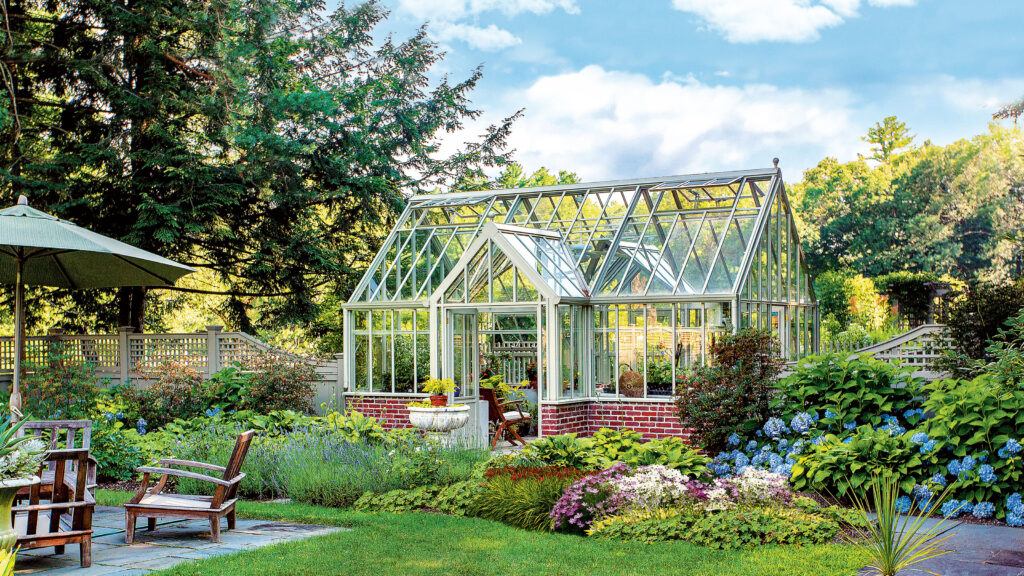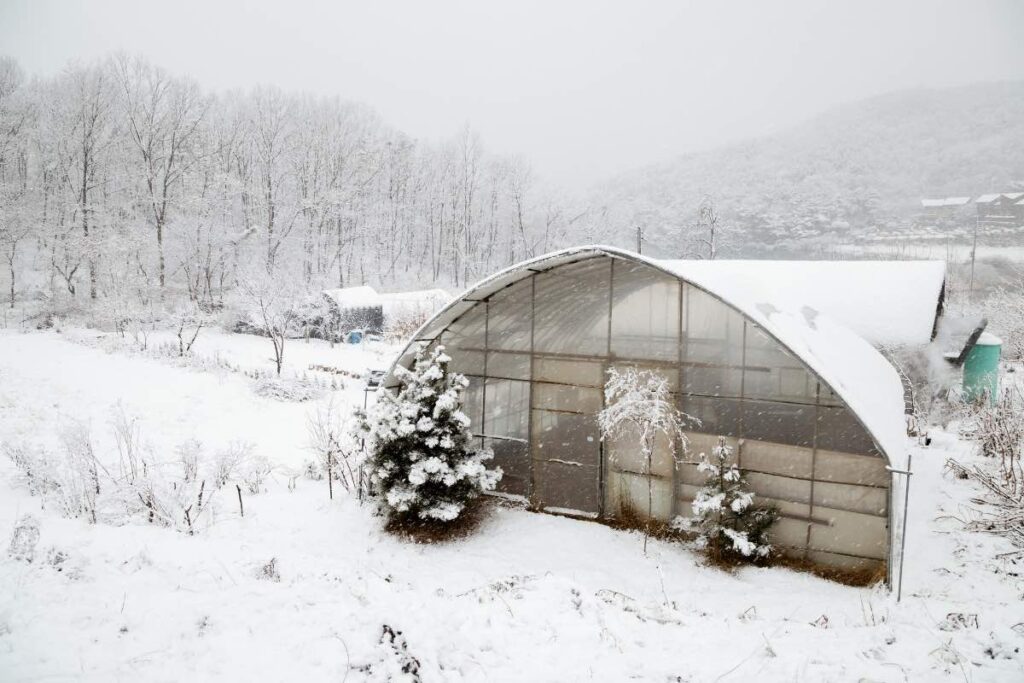As I stood on the threshold of my gardening adventure, a single question loomed like a giant shadow over my aspirations: Which direction should my greenhouse face?
It was a dilemma that beckoned me to embark on a quest for knowledge, and today, I’ll share the insights that transformed my greenhouse into a thriving oasis of greenery.
The primary aim is to have a south-facing greenhouse, as it offers optimal sunlight exposure. However, if this isn’t feasible, a greenhouse oriented toward the southwest or southeast can still work well, ensuring a good amount of sunlight. But, the choice can vary depending on your specific location, the available space, and even the time of year.
In this guide, we’ll dive deep into the science and art of choosing the optimal orientation for your greenhouse. So, let’s navigate the path to flourishing it together.
Which direction should a greenhouse face based on location?
| Location | Recommended Direction for Greenhouse |
| Northern Hemisphere | South or southeast |
| Southern Hemisphere | North or northeast |
| Equatorial Regions | East or west |
| Coastal Regions | East or southeast |
| Inland Regions | South or southeast (Northern Hemi.) |
| Inland Regions | North or Northeast (Southern Hemi.) |
Greenhouse Orientation Based on Location:
- In the Northern Hemisphere: In regions like the United States, Canada, Europe, and Asia, where most of the Northern Hemisphere is located, an ideal greenhouse orientation is facing south or southeast. This positioning ensures maximum sunlight exposure throughout the day, especially during the winter when the sun follows a lower path in the southern sky.
- In the Southern Hemisphere: In countries such as Australia, New Zealand, and parts of South America, which are situated in the Southern Hemisphere, it is recommended to orient greenhouses north or northeast. This orientation takes into account the sun’s path in the southern hemisphere, providing optimal sunlight exposure.
- Equatorial Regions: Near the equator, where countries like Ecuador, Kenya, and Indonesia are found, greenhouses can face either east or west. These areas experience relatively consistent sunlight year-round, making the exact orientation less critical.
What makes a good greenhouse location?

Sunlight Exposure: Ensure your chosen spot receives sufficient sunlight for plant growth. Look for a location that gets at least 6 to 8 hours of direct sunlight daily.
Wind Protection: Shield your growing area from strong winds, which can harm plants. You can use natural barriers like trees or structures to reduce wind impact.
Level Ground: Pick a flat, well-drained area to avoid water accumulation and provide a stable foundation for your growing space.
Access to Water: Check that you have easy access to a water source for irrigation, which is necessary to keep the soil moist all the time.
Soil Quality: Assess the soil quality in your selected area for proper drainage and fertility to support plant growth.
Accessibility: Choose a location that is easily accessible for tending to your plants, carrying supplies, and performing necessary tasks.
Local Climate: Consider the local climate and microclimates within your area, including potential challenges such as frost-prone areas or excessive heat.
Distance to Structures: Keep a safe distance from existing structures or trees to avoid shading and allow for proper ventilation.
Regulations and Approvals: Check local regulations and obtain any required permits before establishing your growing area.
Future Planning: Plan for potential expansion or additional structures, leaving space around your growing area to accommodate future needs.
Microclimate Awareness: Be mindful of microclimate variations in your chosen location, including factors like nearby water bodies, terrain, and vegetation that can affect temperature and humidity.
Sun Path Understanding: Familiarize yourself with the sun’s path throughout the year to optimize shading and sunlight exposure for your plants.
What to Do When Your Greenhouse Direction Isn’t Optimal?
When your greenhouse is not ideally oriented, and you’re unable to change its direction, there are several strategies you can implement to make the best of the situation:
Shade and Ventilation: Implement shading techniques such as shade cloth or adjustable vents to control the amount of sunlight entering the greenhouse. This can help prevent overheating during the hottest parts of the day.
Interior Layout: Arrange your plants and growing beds strategically within the greenhouse. Place taller plants or structures on the side where sunlight is most abundant, while shorter or more shade-tolerant plants can go on the less sunny side.
Seasonal Adjustments: Recognize that sunlight angles change with the seasons. Adjust the position of your plants or shading devices as needed to optimize their exposure to sunlight.
Reflective Surfaces: Use reflective materials on the non-ideal side of the greenhouse to bounce sunlight onto your plants. Mirrors or reflective foil can help distribute light more evenly.
Supplemental Lighting: Consider using grow lights, especially during periods of limited sunlight, to ensure your plants receive adequate illumination. Grow lights stimulate photosynthesis in plants, just like sunlight does.
Further, they provide the red and blue color spectrums necessary for flowers to bloom and vegetables to grow. There are two main types of grow lights – fluorescent and LED, with LED being the more energy-efficient choice.
Heat Management: Implement proper insulation and ventilation to regulate temperature. Adequate insulation can help prevent excessive heat loss during cold nights, while ventilation systems can dissipate heat on hot days.
Cold Frames: If your greenhouse is primarily for season extension, consider adding cold frames on the less sunny side. These can provide additional protection and warmth for your plants.
Plant Selection: Choose plant varieties that are more tolerant of lower light levels if your greenhouse receives less sunlight than desired.
Portable Greenhouses: If feasible, use portable or temporary greenhouses that can be moved to more suitable locations as needed.
Evaluate Microclimates: Study the microclimates to identify areas with varying light levels. Place light-sensitive plants in areas where they receive the most sunlight.
What are the advantages and disadvantages of freestanding or an attached greenhouse?

When embarking on the journey of establishing a greenhouse, gardeners face an initial crucial decision: to determine whether their horticultural haven will take the form of a freestanding sanctuary or a greenhouse harmoniously attached to an existing structure.
| Aspect | Freestanding Greenhouse | Attached Greenhouse |
| Advantages | ||
| Location flexibility | Can be placed anywhere on the property, optimizing sunlight exposure. | Utilizes existing structures, potentially saving space and construction costs. |
| Temperature control | Easier to control temperature and ventilation due to its standalone nature. | Benefits from some temperature regulation from the attached structure, potentially requiring less heating in colder months. |
| Space availability | Offers more space for various plant types and layouts. | Limited space may encourage more efficient plant arrangement. |
| Design options | Various architectural designs are possible, enhancing aesthetics. | Integration with the house may create a cohesive and visually appealing garden area. |
| Disadvantages | ||
| Construction cost | Typically more expensive due to standalone design and foundation requirements. | Can still be costly, particularly if significant structural modifications are needed. |
| Maintenance | May require more maintenance, such as additional heating and cooling systems. | Shared walls with the house may require regular upkeep and can pose potential pest and disease transmission risks. |
| Sunlight limitations | Potential for overshadowing by other structures or trees, limiting sunlight exposure. | Reliant on the house’s orientation and the potential for shading. |
| Aesthetics | May not blend seamlessly with the house’s architecture. | Must complement the existing house design, limiting creative freedom. |
| Expansion options | Limited expansion potential without altering the landscape. | Limited by the available space on the house for expansion. |
| Accessibility | May require a separate entrance and access point. | Convenient access from the house, but limited to the proximity of the house itself. |
FAQ
Where is the best place to face a greenhouse?
The ideal orientation for a greenhouse is south-facing to maximize sunlight exposure throughout the day.
What is the best angle for a greenhouse?
A greenhouse roof pitch of around 30-45 degrees is generally recommended for efficient light capture and snow shedding.
What is the best style of greenhouse?
The best greenhouse style depends on your needs. Popular options include traditional gable, hoop, and lean-to greenhouses, each suited to different spaces and purposes.
How do you make a perfect greenhouse?
A perfect greenhouse involves proper site selection, good ventilation, temperature control, and suitable materials for your specific climate and plants.
What is the most efficient greenhouse design?
Efficient greenhouse designs incorporate features like double glazing, automated ventilation, and insulation to optimize energy use and plant growth.
What are the qualities of a good greenhouse?
A good greenhouse should offer excellent light transmission, sturdy construction, effective ventilation, and the ability to regulate temperature and humidity for healthy plant growth.
Conclusion
To sum it up, when I decide which way to position my greenhouse, it all depends on what I want and the local climate.
Also, If I want lots of sunlight and warmth, facing it south is a good choice because it gets the most sun during the day, especially in the colder months. But if I live in a hot place, facing it north can keep it from getting too hot.
Additionally, I also need to think about things like wind, nearby buildings, and what I’m growing in the greenhouse. The direction I choose should fit my needs and work well with my surroundings.
Lastly, no matter which way you choose, you’ll need to keep an eye on things and make adjustments as needed to make sure you greenhouse is successful.

